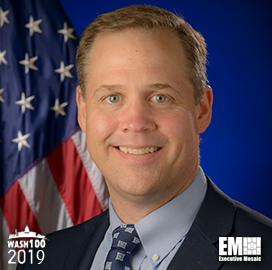
Amazon Web Services (AWS) has announced the general availability of Amazon Keyspaces, a scalable, highly available, and fully managed database service for Cassandra workloads, the company reported on Thursday.
“Amazon Keyspaces gives customers the ability to run Cassandra without having to worry about managing the underlying hardware, and because it’s also serverless, customers can stand up Cassandra clusters in minutes and scale their database up and down with ease based on the needs of their application,” said Shawn Bice, Vice President, Databases, AWS.
Amazon Keyspaces will support the same application code, Apache 2.0 licensed drivers, and developer tools integrated into Cassandra workloads. Customers will be able to migrate on-premises Cassandra workloads to the cloud, without having to manage underlying infrastructure.
The software will also enhance scalability, availability and manageability. Amazon Keyspaces will not use servers to manage, configure or operate large Cassandra clusters. Customers will not need to manually add or remove nodes or rebalance partitions as traffic scales up or down.
Amazon Keyspaces will provide a scalable, highly available and fully managed Cassandra-compatible database service. The offering will be compatible with the open-source Apache Cassandra Query Language (CQL) API.
AWS’ solution will also provide customers with single-digit millisecond performance at any scale, and will scale tables up and down automatically based on actual application traffic, with virtually unlimited throughput and storage. Amazon Keyspaces will additionally offer both on-demand and provisioned capacity modes.
Its on-demand capacity will enable customers to pay only for the actual reads and writes performed by their application. The provisioned capacity with auto scaling, customers will be able to optimize the cost of reads and writes for predictable workloads by specifying capacity per workload in advance.
The technology will enable customers with existing Cassandra tables running on-premises or on Amazon Elastic Compute Cloud (EC2) to easily migrate those tables to Amazon Keyspaces using AWS services like Amazon EMR or open-source tools like the Cassandra Query Language Shell (cqlsh).
In addition, Amazon Keyspaces will integrate with other AWS services, so customers will be able to securely access to tables using AWS Identity and Access Management (IAM), monitor their tables using Amazon CloudWatch, manage their encryption keys with AWS Key Management Service (KMS), automate the creation of resources with AWS CloudFormation and connect their tables to their Amazon Virtual Private Cloud (VPC) with AWS PrivateLink.
One of AWS’ Keyspaces’ customers, Elsevier, a global information analytics business that provides scientists and clinicians with digital solutions and tools in the areas of strategic research management, R&D performance, clinical decision support and professional education, has recently integrated the solution.
“We were concerned about managing and monitoring the Cassandra infrastructure due to its complexity and time required to manage and support,” said Edward Lewis, manager of Information Technology, Elsevier. “Amazon Keyspaces is fully managed and serverless, giving us the scalability, fast performance, and reliability we need to run our applications.”
About Amazon Web Services
For 14 years, Amazon Web Services has been the world’s most comprehensive and broadly adopted cloud platform. AWS offers over 175 fully featured services for compute, storage, databases, networking, analytics, robotics, machine learning and artificial intelligence (AI), Internet of Things (IoT), mobile, security, hybrid, virtual and augmented reality (VR and AR), media, and application development, deployment, and management from 73 Availability Zones (AZs) within 23 geographic regions, with announced plans for 12 more Availability Zones and four more AWS Regions in Indonesia, Italy, Japan, and Spain. Millions of customers—including the fastest-growing startups, largest enterprises, and leading government agencies—trust AWS to power their infrastructure, become more agile, and lower costs.














